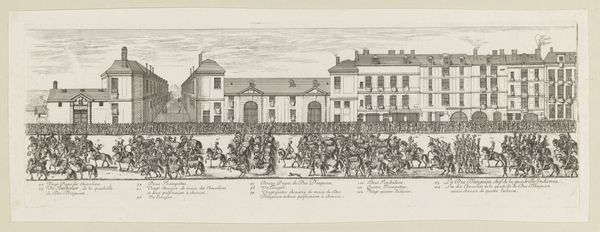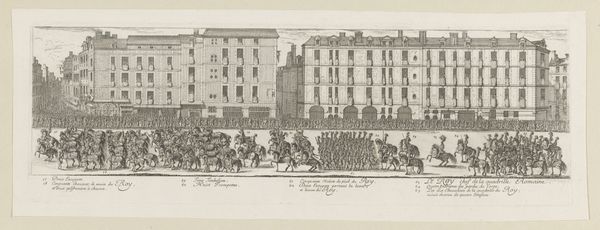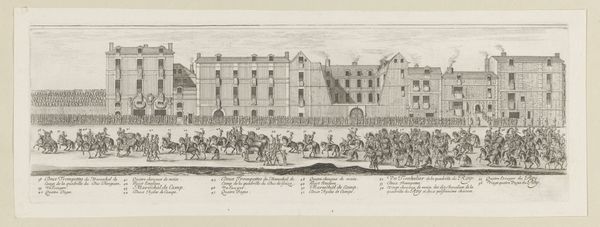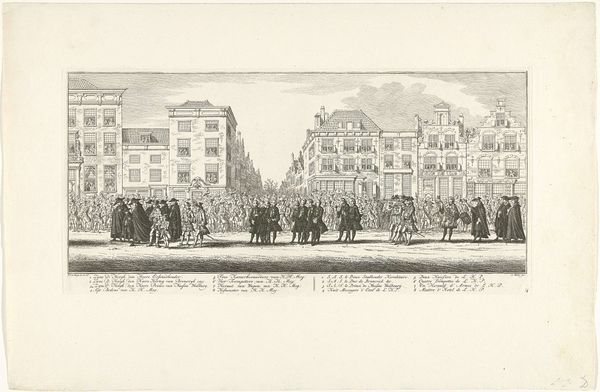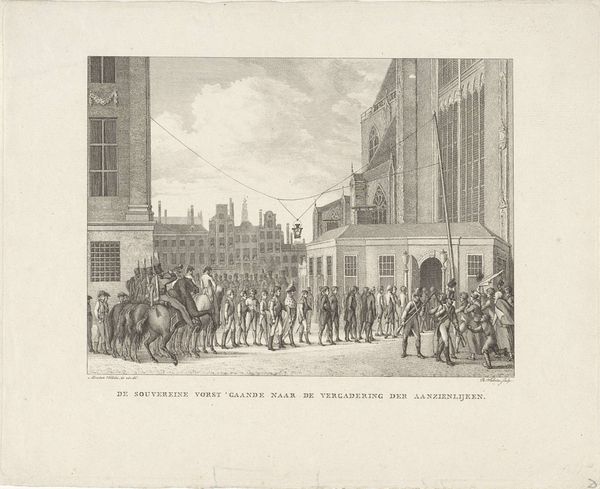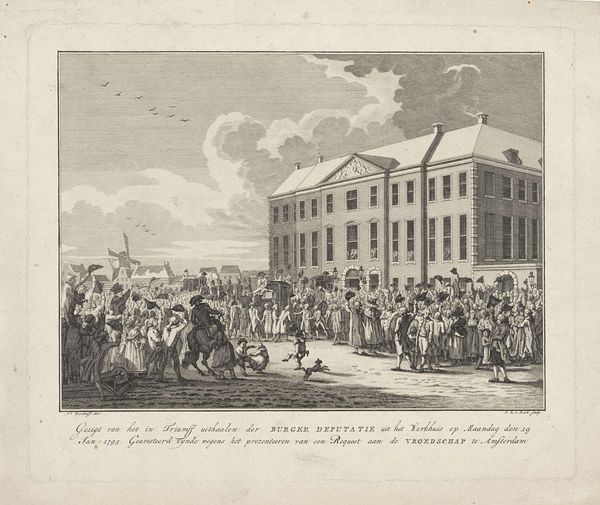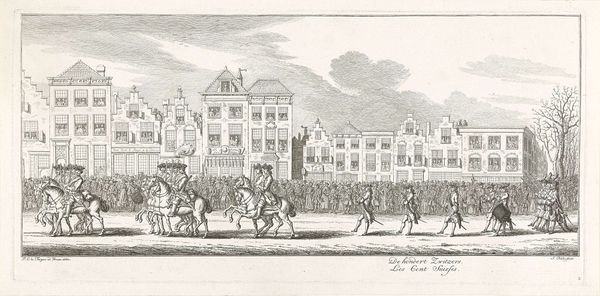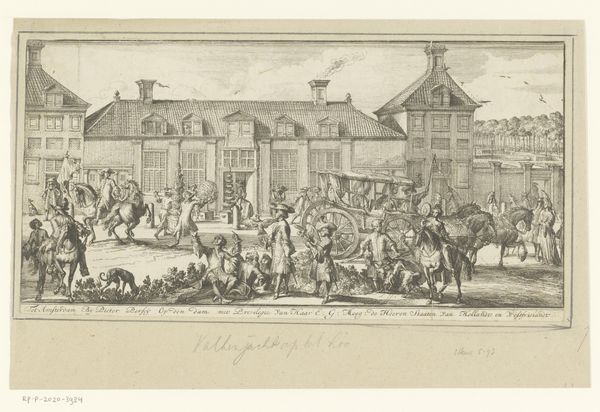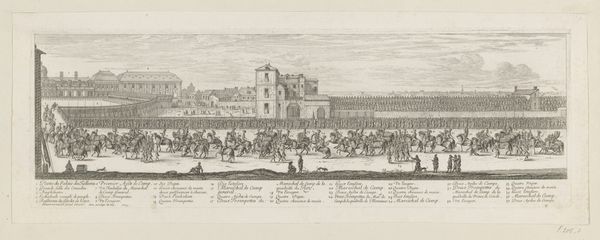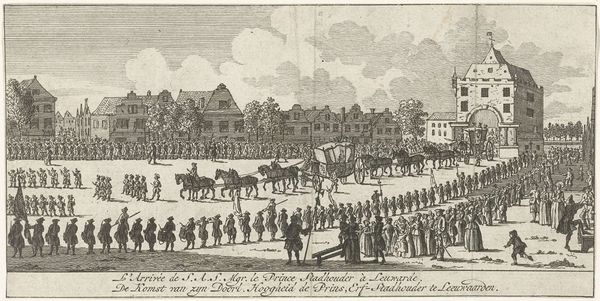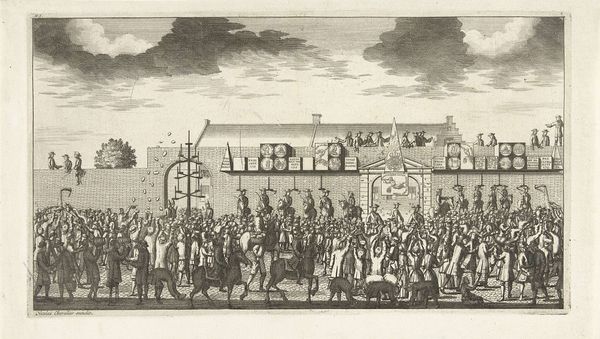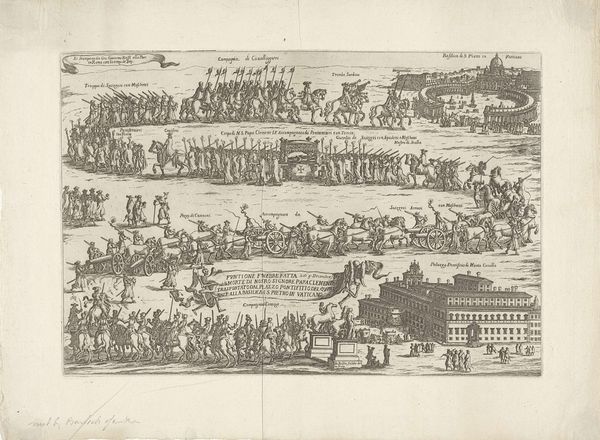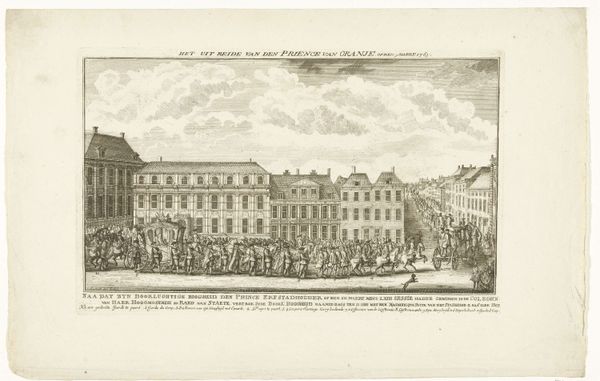
print, engraving
#
baroque
# print
#
old engraving style
#
line
#
cityscape
#
history-painting
#
engraving
Dimensions: height 181 mm, width 553 mm
Copyright: Rijks Museum: Open Domain
Curator: This detailed engraving by Israel Silvestre, created around 1662, depicts a military parade in remarkable detail. Editor: My first thought is about the meticulous precision here; it’s striking how a scene filled with so much movement still feels almost static. It also brings up complex questions about power. Curator: Absolutely. Silvestre, known for his cityscapes and architectural prints, offers us a glimpse into the pomp and circumstance surrounding 17th-century military displays. Consider the function of this artwork. It's not merely documentation, but a carefully constructed image intended to project power. Editor: I agree. And I wonder how much the 'everyday' people of the time actually bought into this projection? This highly formal spectacle highlights an interesting juxtaposition: the implied authority of the army against the potential resistance, even in its silence, of the gathered crowd. The buildings feel like mere stage props amplifying this performance. Curator: Yes, these meticulously rendered buildings are not passive backdrops. The architecture emphasizes the established order, framing the military parade as integral to civic life. It reminds us that urban spaces have historically been, and continue to be, stages for displays of power. Silvestre was also commissioned by powerful people. Editor: That perspective sharpens my unease. Considering how often marginalised communities bear the brunt of militarisation, and the cost this imposes, I wonder about the ethics of immortalising this scene, especially given how printmaking disseminates ideology far and wide. Are we celebrating an imposition of control, then? Curator: Well, perhaps understanding that potential criticism allows us to reassess the impact of art today. The power of such historical imprints rests in deciphering its cultural framework. The artist doesn't necessarily validate a message, but reflects it. This representation permits examination of France's militaristic strategies. Editor: That distinction is crucial. Reflecting on Silvestre's choices – what he includes, what he excludes – shows us how these spectacles were carefully orchestrated for particular social and political impacts. Thanks to your insights, I understand its cultural power differently. Curator: It's equally important to see how such powerful visual representations inform today’s dynamics. Military parades, architectural choices, and artistic narratives all play roles in establishing dominance and encouraging uniformity.
Comments
No comments
Be the first to comment and join the conversation on the ultimate creative platform.
